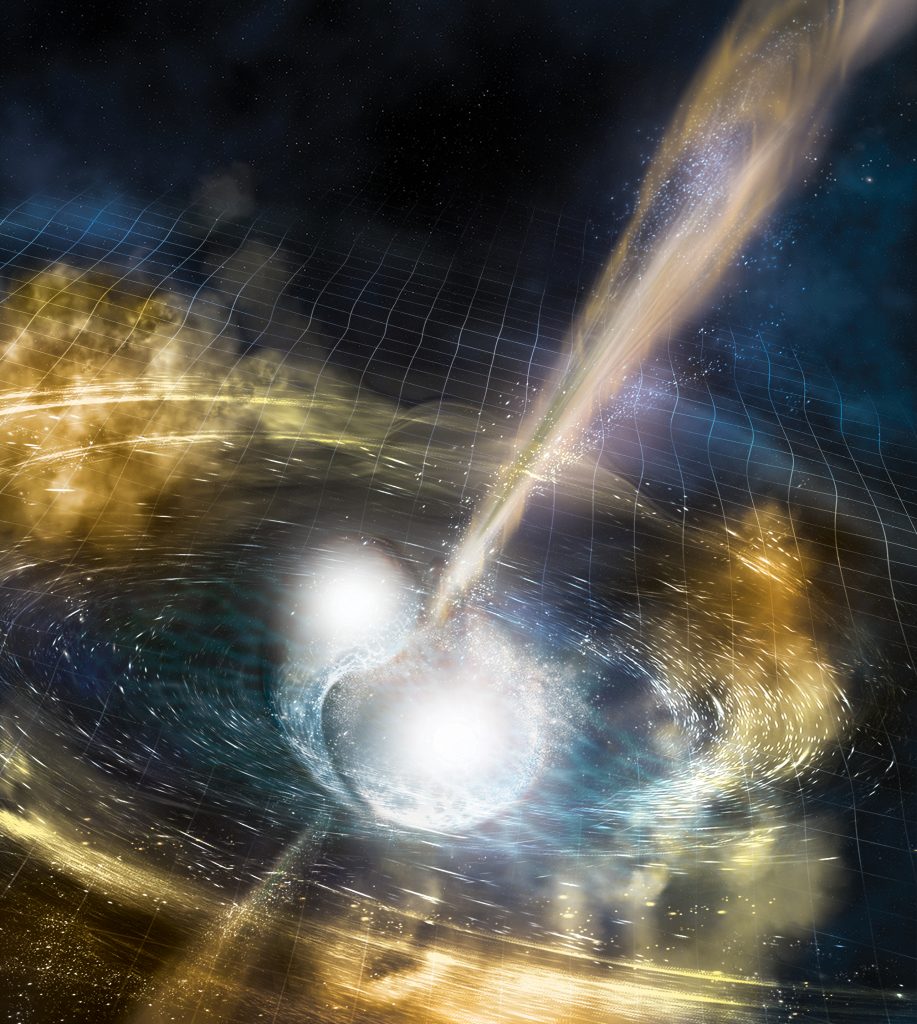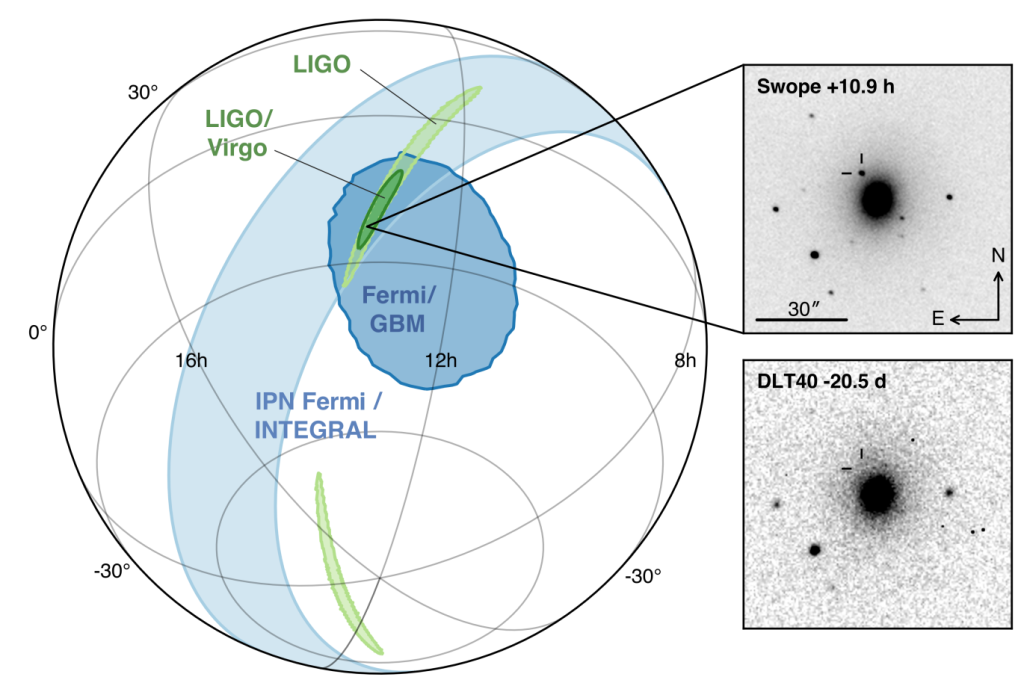Multimessenger Astronomy with Gravitational Waves

A neutron star is an extremely dense, compact object that remains after the collapse of a massive star. These objects have a mass of about 1.4 times that of the Sun, but a radius of the order of just 10 kilometers (6 miles). A teaspoon of a neutron star’s material would weigh about one billion tons, or more than the combined weight of all humans on Earth. When two neutron stars orbit each other in a binary system and approach the point of merger, they emit gravitational waves that can be detected from Earth. However, this is not the only signal that can be detected from such event.
On August 17, 2017, at 14:41:04 CEST, the LIGO and Virgo detectors detected a gravitational wave signal, later named GW170817, which was consistent with the merger of two neutron stars. Just 1.7 seconds later, the Fermi and Integral satellites independently detected a gamma-ray burst, called GRB170817A. The potential connection between these two events alerted astronomers to the possibility of finding other electromagnetic emissions from the binary neutron star.
Thanks to the network of three online gravitational wave detectors, the event was localized to a small area of the sky in the Hydra constellation, approximately 130 million light-years from Earth. In response, an observing campaign involving more than 70 telescopes across the electromagnetic spectrum was launched. Less than 11 hours after the merger, the Swope Telescope in Chile detected a bright optical transient in the galaxy NGC 4993, which was later independently observed by other telescopes in the infrared and ultraviolet bands. This signal was consistent with a kilonova, marking the first confident detection of this type of transient. Subsequently, X-ray and radio emissions were detected, coming from a different physical process than the previous one, which were attributed to the afterglow of GRB170817A. It was the first time in the history of astronomy that an event had been observed through different “messengers”, including gravitational waves. This marked the birth of a new era of astronomy, Multimessenger Astronomy with gravitational waves.

In addition to this, the discovery of GW170817 had fundamental repercussions in physics and astronomy. It allowed us definitively to connect short gamma ray bursts to the merger of neutron stars. It was also possible to observe the production of heavy metals such as gold, confirming that these events can have a significant impact on the enrichment of metals in our universe. The detection also provides information on the equation of the state of neutron stars, that is a relationship between pressure and density, describing matter at supra-nuclear density. Finally, the joint observation of gravitational waves and electromagnetic signals allowed a new measurement of the Hubble constant, an estimate of the expansion rate of the universe.
Observing further sources like GW170817 is pivotal to deepen the important physical implications of this discovery, however this is the only multi-messenger event detected so far. In fact, joint observations of binary neutron stars are not easily replicable. These mergers are rarer than binary black holes and often the localization of the source in the sky is poorly constrained, making this observation particularly complex, given the transient nature of the electromagnetic emission. Close collaboration and teamwork between the gravitational and electromagnetic scientific communities is essential to pave the way for Multimessenger Astronomy, continuing the incredible revolution that began with GW170817.